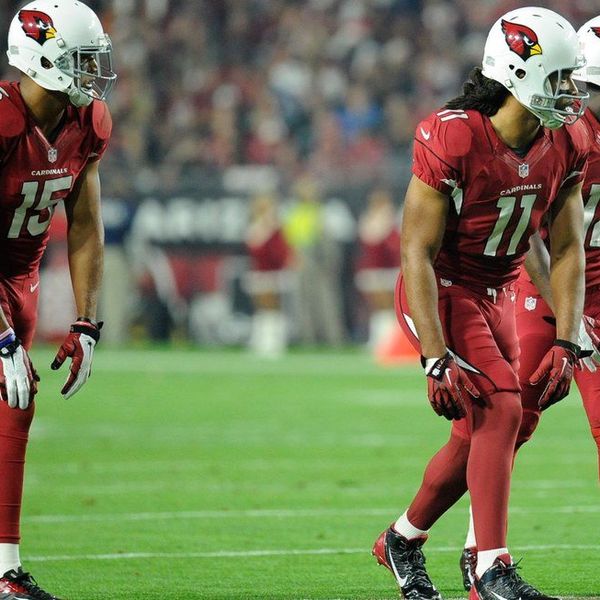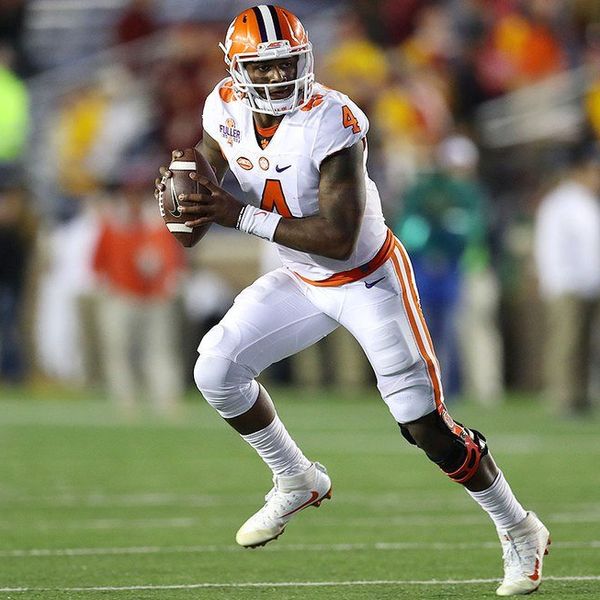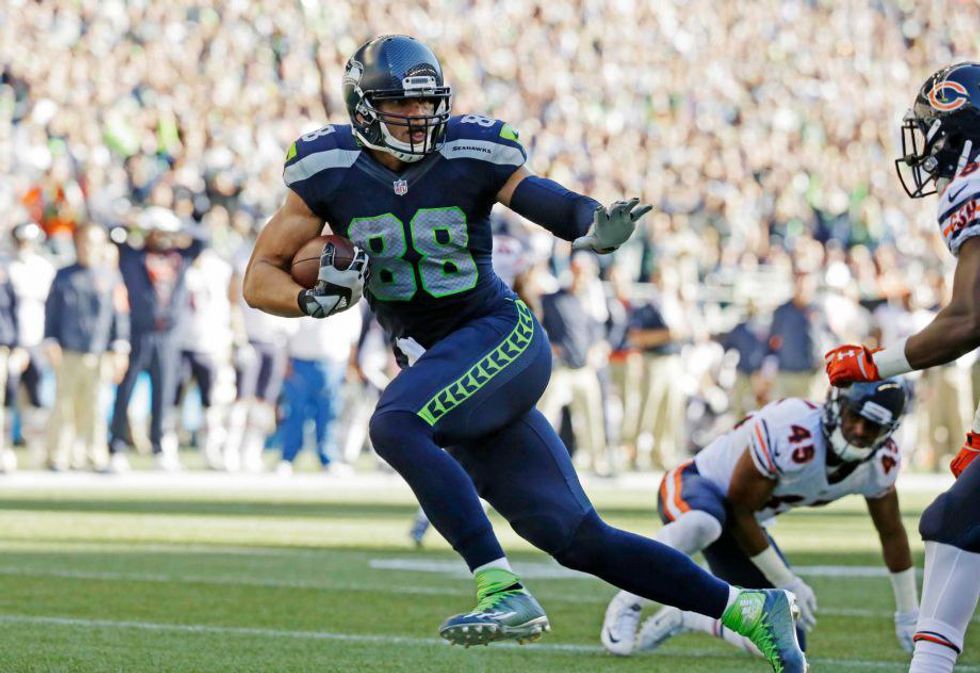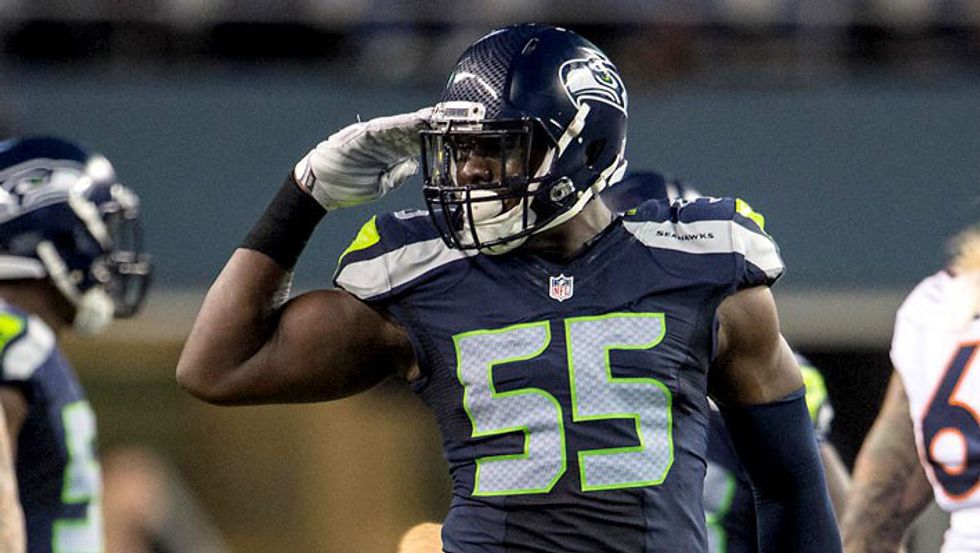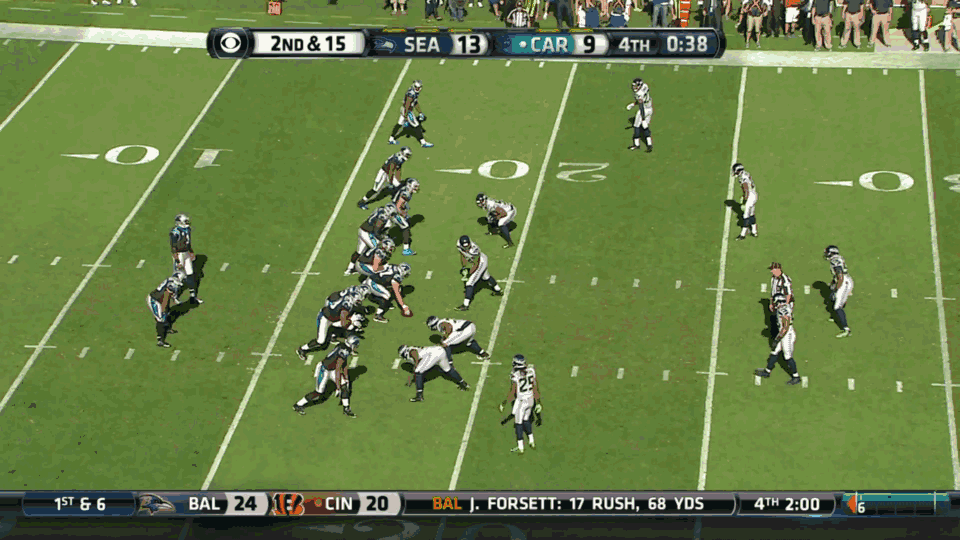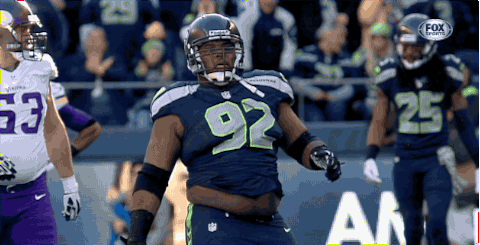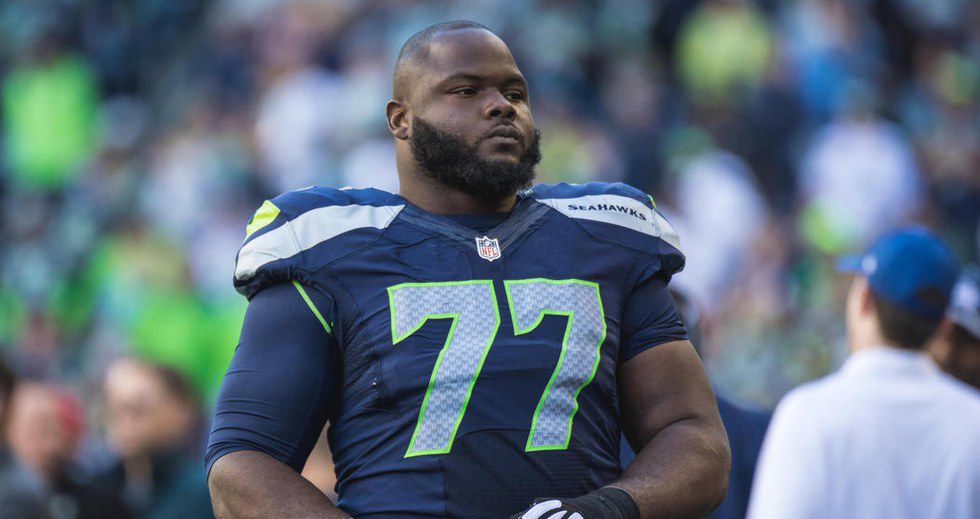The 2015-2016 season came to an unceremonious end for Seattle in Carolina during the divisional round of the playoffs. That, however, should not overshadow what was yet another great season for the blue and green, having attained a fourth straight playoff berth and their fifth in the last six seasons.
I'm here to highlight some of the players that helped propel the Seahawks into the postseason that you might not know much about, or who are maybe a bit more instrumental than you'd think. Some of the advanced analytics I use to make my case include Pro Football Focus -- who grade each player zero to 100 and rank them by position based on how they perform during a given play, not just the outcomes of those plays -- and Football Outsiders, which uses an advanced analytic system (DVOA) to grade teams on how they perform through the season.
Now, onto the list:
7. Jimmy Graham, Tight End.
Seattle’s prized offseason acquisition did not become the ultimate game-changing weapon that Graham was at times in New Orleans. But that also doesn't mean he was a flop. According to Pro Football Focus (PFF), Graham ranked as the sixth best receiving tight end and the 11th best tight end overall. Flashes of dominance from the former Pro-Bowler made multiple appearances throughout the season, evidenced by a 140-yard week six effort at home against the Panthers, and an 83-yard game against the Bears in week three. He was flashing again before he was injured during the fourth quarter in a win against the Steelers in week 12, hauling in four passes for 75 yards. If he continued to pace his numbers during the season, his stat line would have finished at 70 receptions, 880 yards, and three TDs. His team ranks would have been second, second, and fourth respectively.
You could speculate that Graham’s injury was poorly timed. Seattle finished the season ranked with the second-ranked passing offense and first-ranked offense overall by FootballOutsiders, compared to week 12 when Seattle ranked fourth offensively. Some analysts would argue that it was the removal of Graham from the offense that caused it to spike. I do not subscribe to that mindset, as I think more logical reasons for the uptick of offensive productivity exist, such as the implementation of a spread offense and the emergence of Thomas Rawls. People are quick to compare Jimmy Graham with the recent failure of the Percy Harvin trade, since we gave up similar amounts of assets for both. But, unlike Harvin, Graham still has a chance to live up to his lofty status in Seattle.
6. Frank Clark, Defensive End.
Frank Clark was selected 63rd overall in the second round of this year's draft, Seattle’s first pick. But his selection was quickly overshadowed by the next round of the draft process when the Seahawks traded multiple picks to move up and draft Tyler Lockett at 69th overall. This would set a trend throughout the season, as Lockett performed himself into Offensive Rookie of the Year consideration. Though overshadowed, this was still a quietly impressive debut season by Clark, aiding the Seahawks to the top scoring defense and top run defense. Most impressive was a two game stretch where he logged all three of his sacks against Pittsburgh and Minnesota, two crucial wins for the Seahawks in the establishment of their postseason run. Clark ranks 44th out of 110 players that play defensive according to Pro Football Focus, an impressive ranking considering his status as a reserve defensive end.
5. Bruce Irvin, Outside Linebacker.
Bruce Irvin has become better known at times for his conduct off the field than on. Statements about his future with the team, personal fouls, and PED suspensions have come to dominate Irvin’s narrative. But if he decides to leave in free agency this offseason, Seattle would be losing someone who has made themselves into an above-average NFL talent. He ranks 15th out of 97 qualifying linebackers, higher than his much-more-celebrated teammate Bobby Wagner, according to PFF, and ranked third on the Seahawks in sacks with five and a half. Irvin's pass rush skills were what made him so valuable to Seattle in the first round of the 2012 draft, but what essentially stood out was his growth into a well-rounded player. The Seahawks put him to the test by having him make the conversion from defensive end to outside linebacker. The switch changed Irvin’s primary focus from not only chasing quarterbacks, but to making plays in the run game and to cover receivers. According to his PFF grades, he has successfully done so, grading out positively in all three facets of his game.
4. J.R. Sweezy, Guard.
Sweezy has been a fixture on the Seattle offensive line for the past three seasons, starting 46 games out of a possible 48. Sustainability is the reason he earns a spot on this list, as all other four positions besides right guard have had a litany of starters in recent seasons. Even though he wasn’t graded highly by PFF (66 out of 81 qualifying), no one else on the Seahawks' mess of an offensive line rated much better, with the exception of Patrick Lewis (who only started half the season) and Russell Okung, who started 13 games but dealt with injuries throughout the season and has missed a total of 13 games over the past three seasons. Stability along the offensive line is one of the keys to success for any team, and Sweezy has been the only lineman that has been able to provide that for Seattle. He is a free agent after this season, and should be a target if Seattle doesn’t want to have to go through a major transition at the fifth spot of its O-line.
3. Double Feature: Brandon Mebane (Top) and Ahtyba Rubin (Bottom), Defensive Tackle.
I stuck these two together for two reasons. One, because they are the two largest players on the roster, and two, they both play the same position. Apart from their stature and similarities on the field, both carried different stories into 2015-2016 season. Brandon Mebane is currently the longest-tenured Seahawk on the team, having played his entire nine-year career in Seattle. In that time, he has garnered no Pro Bowl interest or been recognized on any first or second all pro teams. Instead, he’s steadily been anchoring some of the league’s best defensive lines throughout his career.
In contrast, Rubin is a newcomer to the ‘hawks, having just finished his first season in blue and green. He was a recent import from the Browns, signing a one year, $2.6 million deal in the offseason. Coming off a season where he anchored a line that ranked dead last in the league against the run, he teamed with Mebane to help the Seahawks produce the best-run defense in football. Allowing a measly 81.5 rushing yards per game, the Seahawks paced the league. Advanced analytics don’t love these two guys (Mebane ranked 70th, Rubin ranked 79th out of 123 qualifying DTs), but they pass the eye test, do the dirty work and hold the point of attack for the rest of the Seattle defense.
2. Doug Baldwin, Wide Receiver.
Doug Baldwin first became a name during his rookie season, being the first undrafted receiver to lead the Seahawks both in passes caught and receiving yardage. The following season, Russell Wilson took over the reigns as the starting quarterback, and Baldwin’s numbers slipped as Wilson developed a better rapport with Golden Tate and Sydney Rice. Over the course of the next three seasons, Baldwin slowly built up better and better numbers as the other guys left. The 2014 season was the first year since his rookie season where he lead the Seahawks in receiving, but it wasn’t until 2015 that he emerged onto the scene as a true number-one option in the Seahawk passing attack. He recorded the first 1,000-yard season by a Seahawk since Bobby Engram in 2007, while tying the lead league in touchdown receptions with 14. Even more impressive, PFF ranked him as the seventh best wide out in football, in front of more celebrated names such as Larry Fitzgerald, Odell Beckham, Jr., and Brandon Marshall. Along with fellow wideouts Jermaine Kearse (ranked 44th) and Tyler Lockett (33rd), Baldwin leads a group of wide receivers that have become anything but mediocre.
1. K.J. Wright.
K.J. is everything you would want in a linebacker. He is highly versatile, having the ability to slide into the middle linebacker role if Bobby Wagner is out. He is excellent in coverage, while also remaining a plus run defender, and pass rusher if sent on a blitz. Even better, he does all this while remaining highly productive, silently leading the Seahawks in tackles with 116 and in forced fumbles with four. PFF ranks him the sixth-best linebacker in the NFL and not only grades him higher than fellow linebackers Bruce Irvin (15th) and Bobby Wagner (30th), but higher than current Pro Bowlers Lavonte David, Navarro Bowman, Derrick Johnson, and Clay Matthews. His numbers should not only put him in the Pro Bowl, but give him a strong case for being first team all-pro.
One of the main reasons he is so overlooked is because of his position. Outside linebackers play different roles in different defenses. The type of defense Seattle plays keeps K.J. in a more classic linebacker role, focused on run and pass defense. Contrast this with a team like the Chiefs, whose outside linebacker’s main responsibility is chasing the quarterback, evidenced by 2014 sack leader Justin Houston. Sacks are a much sexier statistic in people's eyes, causing them to ignore those who play off the line of scrimmage, including arguably the best defender on one of the NFL’s best defenses.
Football is a team game; it takes a collective effort in order to attain and sustain success. While the Seattle Seahawks have some of the biggest names in the NFL, their depth is just as important.

